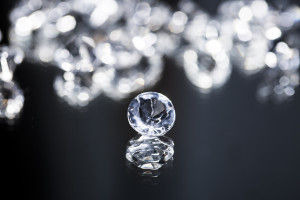 Estate sales can offer up a huge bounty of jewelry and other precious accessories. These are part of the most common pieces that Heritage Estate Sales sees and can offer some fascinating surprises. Although these are absolutely beautiful heirlooms to find, they may not have the value you were hoping for. There are several other stones or fake stones that easily imitate the real deal.
Estate sales can offer up a huge bounty of jewelry and other precious accessories. These are part of the most common pieces that Heritage Estate Sales sees and can offer some fascinating surprises. Although these are absolutely beautiful heirlooms to find, they may not have the value you were hoping for. There are several other stones or fake stones that easily imitate the real deal.
In order to make sure what you find is real, try a few of these simple tests.
The Fog Test
This is one of the simplest tests to check a diamond out and just like the name implies, you are checking your diamond’s ability to fog up. In order to do so, you must breathe hot air on your diamond the same way you would if you were trying to fog up a bathroom mirror. A fake diamond will fog up temporarily, but a real diamond won’t because it is unable to retain any heat.
“Sparkle” Test
The way a diamond can reflect light is unique from other precious gems and stones. Inside of the stone, diamonds will sparkle gray and white, also known as brilliance, while outside of the gem and it will reflect rainbow colors onto other surfaces. This rainbow of dispersed light is known as “fire”.
A fake diamond will have rainbow colors that you can see inside the diamond. Since many people have a misconception about diamonds sparkling like a rainbow, it’s easy for them to confuse the fake for the real deal. However, as we mentioned before, diamonds have more of a grey sparkle on the inside. So if your stone looks like a rainbow on the inside, that’s probably a good sign that it is fake.
Sandpaper Test
Diamonds are known for being one of the world’s hardest materials. This is why diamonds are nearly impossible to scratch up or damage without specialized tools. So if you rub your diamond on a sheet of sandpaper, you can tell whether you have the real deal or not depending on whether that was enough to scratch up the stone. If it is scratched by this process, it’s probably fake. In fact, if you find scratches already on the stone when you see it in an estate or other sales, most likely it is a fake.
So if it’s not a diamond, then what could it be?
White sapphire – Usually, we think of sapphire as being blue, but this gemstone can just as easily come in white. Sapphires to not carry the same strength of a diamond however and does not have the same “fire” or “brilliance” of a real diamond.
White topaz – Topaz is typically a tinted yellow, red, brown, or pale gray mineral, but can occasionally appear white or colorless. Though topaz is a pretty strong gem, it cannot compare to diamonds and will wear down over time.
Cubic zirconium – This has been mass-produced since 1976 and can be easily scratched. Also it cannot match the same “fire” and shine as diamonds.
Moissanite – Moissanite is much harder than cubic zirconium and these are very visually dazzling. The biggest difference is that moissanite has a different type of “brilliance” than a diamond which gives it a disco ball effect.
Here at Heritage Estate Sales, we handle several different jewelry pieces and other precious accessories. Our websites offer a comprehensive overview of these sales to allow our clients a better sense of what they can gain.
